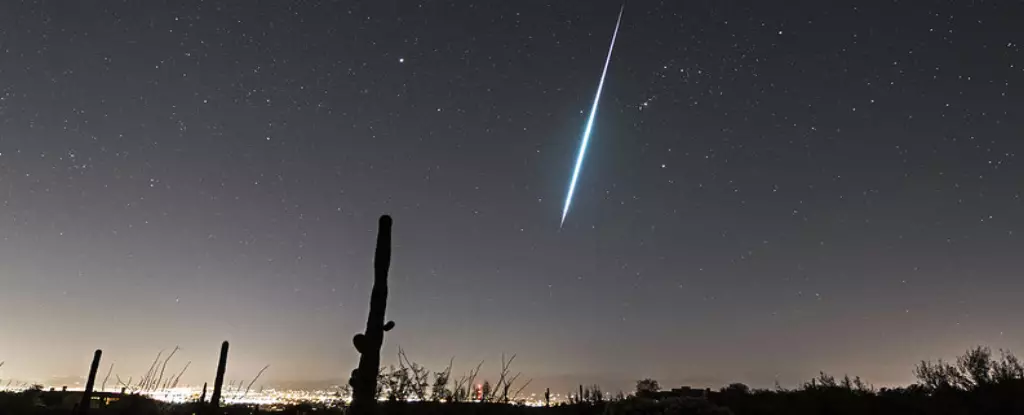As we approach the close of 2024, stargazers and astronomy enthusiasts can anticipate one of the year’s most breathtaking celestial events: the Geminid meteor shower. The shower will peak from the night of December 13th to the early hours of December 14th, offering a dazzling display of meteors racing across the night sky. Historically regarded as one of the premier meteor showers, the Geminids promise an impressive show, even amid certain challenges posed by weather and lunar phases.
This year, the Geminids come with a few hurdles. The cold December air can serve as a deterrent for many would-be observers, compelling them to bundle up or retreat indoors. Furthermore, the lunar cycle poses an additional complication; the Moon will be a luminous 98 percent illuminated, which can obscure the visibility of the meteors. Nonetheless, it is critical to remember that the shower reaches its peak precisely at 3:00 Universal Time on December 14th (10:00 PM EST on December 13th). With the potential for 120 meteors per hour under ideal viewing conditions, perseverance in facing the cold and the light of the Moon could yield an extraordinary viewing experience.
Unlike most meteor showers that originate from comets, the Geminids have a unique provenance: they stem from the asteroid 3200 Phaethon, which possesses characteristics of both an asteroid and a dormant comet nucleus. This duality adds an unprecedented layer of intrigue to the Geminid phenomenon. Discovered in 1983, Phaethon completes a swift orbit around the sun in just 1.4 years. Its unique composition—a so-called “rock-comet”—paves the way for discussion regarding the future of planetary bodies and their classifications. As a testament to this curiosity, Japan’s space agency plans to launch the DESTINY+ mission, aiming to rendezvous with Phaethon in 2028 to explore its mysteries in greater depth.
To optimize the Geminid experience, viewers should seek out locations that provide the darkest skies possible, far removed from the pervasive glow of city lights. Standing at an elevated viewpoint or in nature is encouraged, allowing enthusiastic watchers to view the meteors descending from their radiant in Gemini, situated near the bright star Castor. While the peak time is indeed a highlight, the shower’s activity extends over several nights, ensuring that observers have the chance to catch meteors even before and after the peak date.
Additionally, factors such as the Moon’s position can heavily influence visibility. As it approaches the December solstice, its trajectory will result in it being positioned higher in the sky. Thus, selecting a viewing location that allows for natural obstructions—like a hill or tree—can significantly enhance the overall experience.
Observing meteor showers can contribute to scientific efforts and knowledge building through projects led by organizations like the International Meteor Organization (IMO). Participants can document their findings by simply watching and counting meteors during designated intervals. Such community-driven science helps researchers understand meteor activity, enhancing the appreciation of these fleeting cosmic visitors.
For those interested in astrophotography, automating the capture of images can yield delightful results. A wide-field DSLR camera mounted on a sturdy tripod, combined with an intervalometer to take timed shots, allows photographers to focus on capturing images without being distracted from the breathtaking display. Aim the camera approximately 45-90 degrees from the radiant to maximize the chances of capturing meteors.
The 2024 Geminid meteor shower stands as a spectacular way to bid farewell to the year. By overcoming challenges posed by weather and light, focusing on ideal observation techniques, and participating in scientific observation, stargazers can truly immerse themselves in this cosmic spectacle. Join fellow astronomy enthusiasts in embracing the wonders of the universe, letting the Geminids inspire a sense of awe and appreciation for the celestial phenomena. So grab your warmest clothes, choose your viewing spot wisely, and don’t miss this brilliant meteor display!


Leave a Reply